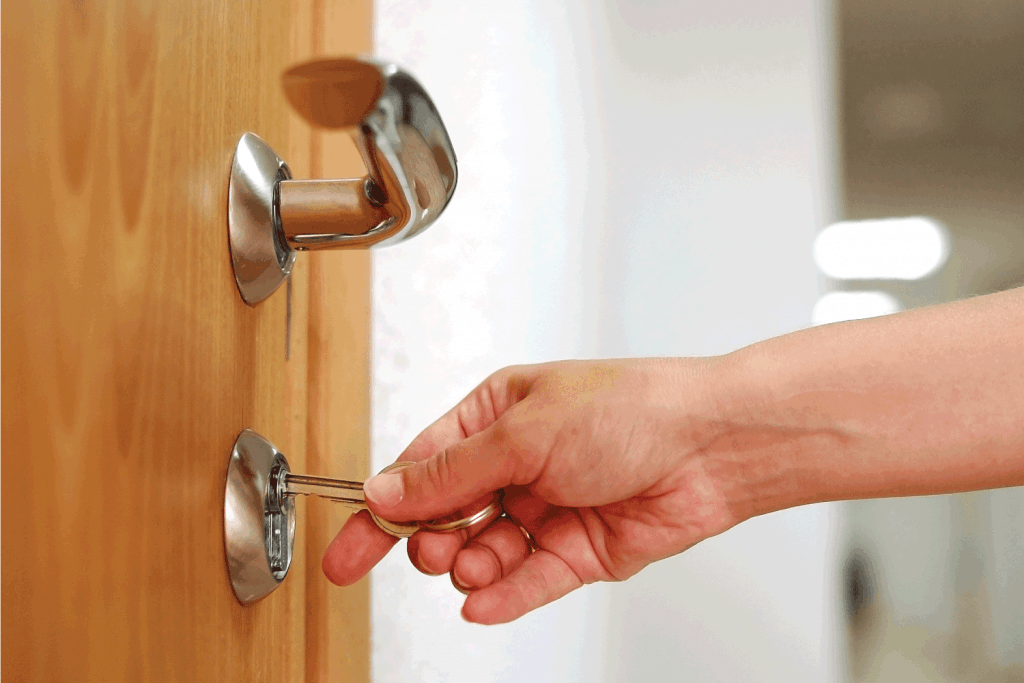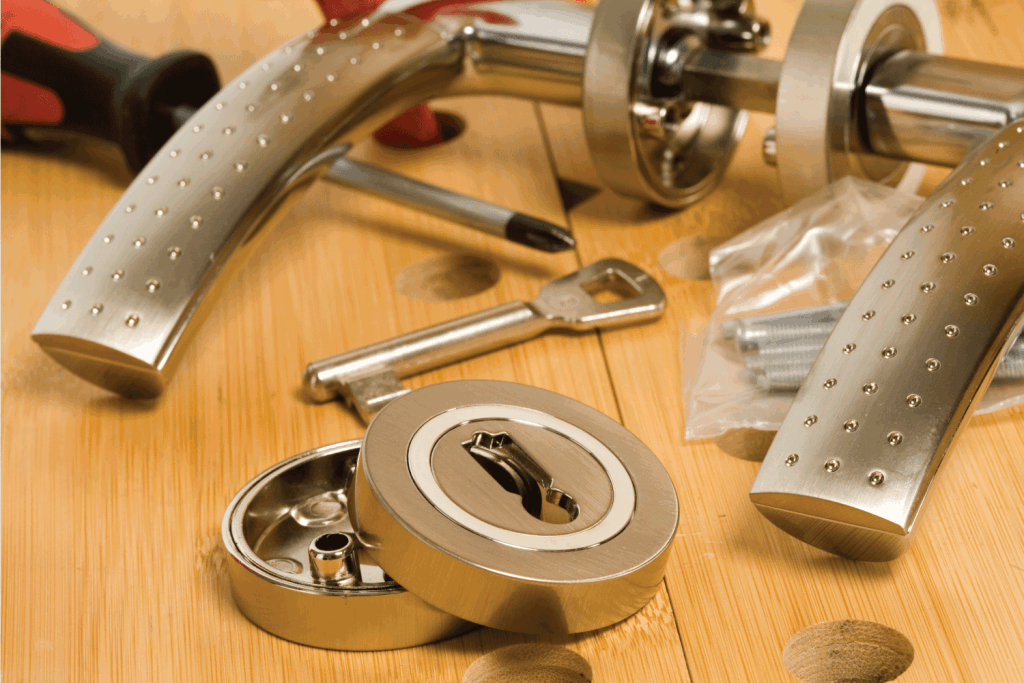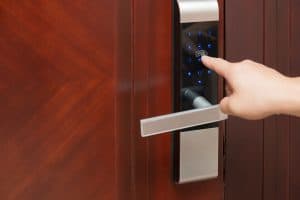Your heart can skip a beat after finding out you lost the key to your door. If you’re outside, it can be challenging to enter your home without a key. But if you’re still inside and you can’t find the key, it worries you, knowing that you can’t secure your home. So you ask yourself, can you make a key from a lock? We've asked industry experts to help you with this particular concern.
Yes, you can make a key from a lock. Take the lock to a locksmith and the professional can use different techniques, such as cutting the key to code, using a lock impression, and disassembling the locks from the doors.
Using the methods above can be tough if you’re inexperienced. You should consult the services of professionals in the industry to avoid costly DIY mistakes. Still, you can reduce the hassle by making yourself familiar with the issue. Continue reading to learn the details in making keys from locks, along with other relevant information.

How to Make a Key From a Lock
In many cases, locksmiths only need the original key to make a duplicate. However, some instances require these experts to create locks from keys. The techniques used to achieve these goals are the following:

Cutting the Key to Code
Also called a code machine, a code cutter is an essential tool for locksmiths. It creates keys from the code found in a standard house lock or on the key. The locksmith will input the code into the machine, creating a replica of the lost key.
After using the code cutter, locksmiths can use a punch machine to indicate the depth and width of the required cut. This tool can also help force the blade onto the key, creating accurate cuts. Additionally, the cuts created by the punch machine don’t need sanding because it doesn’t produce burrs.
On the other hand, some locksmiths may not use punch machines after using their code cutters. However, these professionals still need to sand the completed key. Otherwise, the key can snag into the lock because of the rough edges.
Using a Lock Impression
Impressioning a lock is a more direct approach than cutting the key to code. This technique also doesn’t require locksmiths to disassemble the lock.
With this method, the locksmith will start by inserting an appropriate blank key into the lock. Then, the professional turns the blank key to attach the pins with the lock cylinder. This process happens several times until the locksmith achieves an impression of the key.
Once the necessary marks appear on the blank key, the locksmith will use a file or sander to create a working key. Additionally, the locksmith may insert the key into the lock multiple times for tests.
Take note that a locksmith may ask if you want an aluminum or steel blank key. Aluminum keys can be less expensive than their steel counterparts, but they’re more prone to wear and tear. On the other hand, steel keys are more durable than aluminum variants, but these options tend to cost more than aluminum blank keys.
Disassembling the Lock
If the locksmith can’t find the code in the lock and key, and if it’s more challenging than usual to do a lock impression, the professional can resort to disassembling the lock to fashion a key. In turn, the locksmith can reverse-engineer a working key by creating a mold from the dismantled lock. Reliable locksmiths can reassemble the lock after the completion of the mold.
How Much Does it Cost to Make a Key From a Lock?
According to a table from HomeGuide, the cost to create a key from a lock ranges from $50 to $100. You may also have to pay for other fees from the service, including (but not limited to) travel costs and equipment expenses. Furthermore, the price is generally less expensive when replacing a house key with a traditional lock. It becomes more expensive if the locksmith has to create a new key from a digital lock.
Is There a Key That Can Open Any Lock?

Yes, and it’s called a bump key. Bump keys have designs that bypass all security mechanisms from traditional locking mechanisms, such as conventional pin and tumbler locks. Also called 999 keys, bump keys have cuts at the maximum depth, which is 999 in a key-making tool. With the bump key, you can unlock different types of locks, including padlocks, deadbolts, and barn door locks.
It works by disrupting the pins inside locks. The ridges won’t become aligned properly, causing the lock to malfunction. However, knocking the lock with a relatively dense object, like a screwdriver or small mallet, will connect the pins to the bump key. The user can then turn the bump key to open the lock on the door.
How Do You Get a Skeleton Key for Old Locks?

You can purchase a skeleton key set online. Take note that these keys will open your old lock. Still, these skeleton keys are relatively inexpensive. So if these keys don’t fit your lock, you may use them for other purposes, such as wall ornaments.
Aside from buying skeleton keys online, you can also DIY a skeleton key that’ll fit your lock. Here are the steps for this particular project:
- Remove the lock from the door by loosening its screws. Then, twist or pull it off of its spindle. You may need to cut through the door to pop out the lock.
- Use a blank skeleton key. Make sure that the blank key has a tip diameter that fits the lock.
- Use your thumb to hold the lock’s lever. This component should be against the bolt. Then, insert the key and turn it. The skeleton key’s bit should push the lever away while retracting the bolt.
- Find the tiny bumps (called wards) in the lock. Next, use a clamp to hold the key in place as you file the bit that matches the lock.
- Once you finish filing the bit, remove the clamp and insert the key again. The key should pass between the wards freely.
Check out this Aokbean Skeleton Key Set on Amazon.
What Can I Use Instead of a Skeleton Key?
You can open an old lock without a skeleton key. Some options don’t even require you to make a new key. Your choices for your next actions can include lock-picking to using a drill.
Lock-picks
Many old locks use a mortice architecture. If so, you can use a lever lock-pick tool. This item has two main pieces of wire and both have right-angle bends. You use one right-angled wire to apply pressure to the bolt in the lock. Then, use the other wire to lift the levers. You’ll know if you picked the lock correctly if you hear a clicking sound for each unlocked pin.
Knives
Be forewarned as using a knife to pry open a locked door can be dangerous. Although it can be excessive, a standard kitchen knife can help you open an old lock. It’s because locks that use skeleton keys generally have basic structures. If you can push the bolt inwards slightly, you can turn the knob and open the door. However, this method will fail if the door has a sturdy latch.
Drills
Only use a drill as a last resort as this tool will damage the lock permanently. Use a hand drill to destroy the internal components and mechanisms of the lock. Additionally, you can use a drill bit larger than the lock although you’ll be at a considerable risk of contracting injuries. Therefore, use a drill bit that’s relatively the same size as the lock’s opening.
Can Home Depot Make a Key from a Lock?
As per this 2018 article, Home Depot can rekey a lock if you take it to one of the company's locations. However, the price may vary for each location. Some Home Depot stores may charge about $5 to $10 while others don't require payments for this service, particularly if you bought the lock from the retailer.
Final Words
You can make a key from a lock with the help of a locksmith. The professional can use different methods to rekey the lock, such as cutting a blank key to a code and using a lock impression. Keep in mind that the services rendered can impact the professional’s fees.




